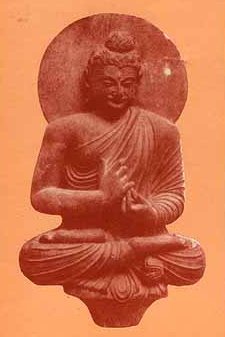Patara, Paṭāra: 8 definitions
Introduction:
Patara means something in Hinduism, Sanskrit, Buddhism, Pali, Jainism, Prakrit, Hindi. If you want to know the exact meaning, history, etymology or English translation of this term then check out the descriptions on this page. Add your comment or reference to a book if you want to contribute to this summary article.
Languages of India and abroad
Pali-English dictionary
Source: Sutta: The Pali Text Society's Pali-English DictionaryPatara, (Vedic pradara, pa+dṛ, with t. for d.; see Trenckner, Notes 6216; Geiger, P. Gr. § 39, 4) a split, a slit J. IV, 32. (Page 405)

Pali is the language of the Tipiṭaka, which is the sacred canon of Theravāda Buddhism and contains much of the Buddha’s speech. Closeley related to Sanskrit, both languages are used interchangeably between religions.
Sanskrit dictionary
Source: Cologne Digital Sanskrit Dictionaries: Cappeller Sanskrit-English DictionaryPaṭara (पटर).—1. [masculine] or [neuter] ray (of sunlight).
--- OR ---
Paṭara (पटर).—2. [masculine] [Epithet] of Varuna.
--- OR ---
Patara (पतर).—[adjective] flying, fugitive.
Source: Cologne Digital Sanskrit Dictionaries: Monier-Williams Sanskrit-English Dictionary1) Paṭara (पटर):—[from paṭ] mn. a ray (of sunlight), [Atharva-veda]
2) [from paṭ] m. Name of the third of the 7 suns, [Taittirīya-āraṇyaka; Viṣṇu-purāṇa] ([varia lectio] paṭala)
3) [v.s. ...] Name of Varuṇa, [Taittirīya-āraṇyaka] (‘having a cloth-like skin’ [Sāyaṇa])
4) Patara (पतर):—[from pat] mfn. flying, fugitive, [Ṛg-veda]
[Sanskrit to German]
Sanskrit, also spelled संस्कृतम् (saṃskṛtam), is an ancient language of India commonly seen as the grandmother of the Indo-European language family (even English!). Closely allied with Prakrit and Pali, Sanskrit is more exhaustive in both grammar and terms and has the most extensive collection of literature in the world, greatly surpassing its sister-languages Greek and Latin.
Hindi dictionary
Source: DDSA: A practical Hindi-English dictionaryPaṭarā (पटरा) [Also spelled patra]:—(nm) a plank; harrow; —[kara denā] to devastate, tospell ruination; to demolish; to raze to the ground; —[pheranā] to devastate, to raze to the ground;—[baiṭhanā] (business etc.) to crash, to be undone/ruined; —[honā] to be ruined/undone.
...
Prakrit-English dictionary
Source: DDSA: Paia-sadda-mahannavo; a comprehensive Prakrit Hindi dictionaryPatāra (पतार) in the Prakrit language is related to the Sanskrit word: Pratāra.
Prakrit is an ancient language closely associated with both Pali and Sanskrit. Jain literature is often composed in this language or sub-dialects, such as the Agamas and their commentaries which are written in Ardhamagadhi and Maharashtri Prakrit. The earliest extant texts can be dated to as early as the 4th century BCE although core portions might be older.
Kannada-English dictionary
Source: Alar: Kannada-English corpusPātara (ಪಾತರ):—
1) [noun] a kitchen container; a utensil.
2) [noun] rhythmic movement of the body and feet ordinarily to music; dance.
3) [noun] a man who is eligible or suitable for.
4) [noun] a dancer or a stage actor.
Kannada is a Dravidian language (as opposed to the Indo-European language family) mainly spoken in the southwestern region of India.
See also (Relevant definitions)
Starts with: Pataracam, Pataracana, Pataraga, Pataragitti, Pataraguttu, Patarai, Pataraicceti, Pataraka, Pataramukki, Pataramukkicceti, Pataran, Patarane, Patarani, Pataranjaka, Patarar, Patarasa, Pataratcai, Patarati, Pataravatam, Patarayanan.
Ends with (+5): Alpatara, Dhupatara, Dipatara, Duppatara, Durnishprapatara, Hatarapatara, Ipatara, Khatarapatara, Lakhapatara, Latarapatara, Latarapatara, Nipatara, Papatara, Patapatara, Pushpatara, Samipatara, Satarapatara, Shipatara, Simgarapatara, Sinara-patara.
Full-text: Pratara, Petara, Sinara-patara, Patari, Patura, Saptasurya, Patala, Patra.
Relevant text
Search found 2 books and stories containing Patara, Paṭara, Paṭarā, Patāra, Pātara, Paṭāra; (plurals include: Pataras, Paṭaras, Paṭarās, Patāras, Pātaras, Paṭāras). You can also click to the full overview containing English textual excerpts. Below are direct links for the most relevant articles:
Rig Veda (translation and commentary) (by H. H. Wilson)
Rig Veda 2.2.4 < [Sukta 2]
Diaspora of Bhuta (Daiva) worshipping cult—India and Indonesia (by Shilpa V. Sonawane)
Part 7 - Ancient Statue of Dewi Sri < [Chapter 4 - Inter-Disciplinary Analysis]
Part 6.6 - Dewi Siri (Indonesia) < [Chapter 4 - Inter-Disciplinary Analysis]